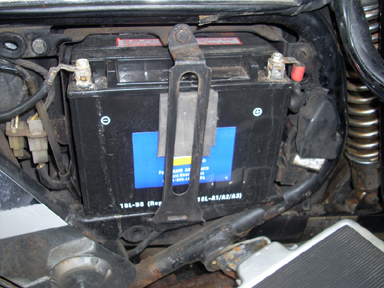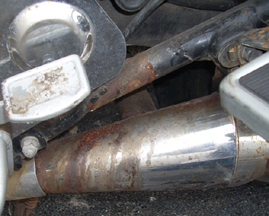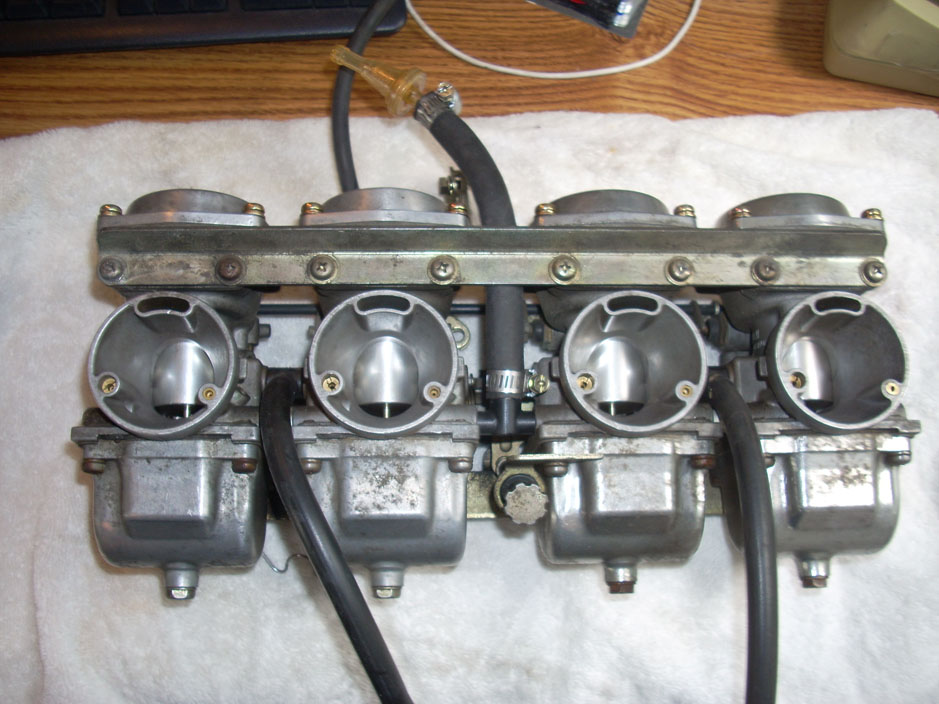There are a few important things to do before you put your bike away for the winter. 
Battery: This is a major issue and you should know that your battery will lose's charge as time goes by and will be dead as a stone by the spring.
So use a smart charger.
You don't have to take the battery out of the bike but just hook the charger up in-situ and keep it on until spring.
So use a smart charger.
It will use very little electricity and the battery will be hot to trot when you are. If you have a battery that is not a maintenance free type, then check the electrolytes and add whatever water is needed.
Before you hook up the charger, clean the main battery connections, and add a little grease to avoid corrosion. I use vaseline.
Be sure that your battery isn't leaking acid or this will happen.
Cold climates: Be sure that you have effective antifreeze in the radiator if you have one. Antifreeze can get old and lose it's functionality. You can use a hydrometer to do the job or just change the fluid.
Fuel Tank Rust and Carburetor Clogging: Fill the tank to the top with fuel and include fuel stabilizer.
I use Sta-bil. It's available in automotive and marine supply stores. This is a big problem that can be a costly repair in the spring.

After a period of a few weeks to a month or two the ethanol in the fuel turns to a jelly that will clog the carbs and you won't be able to start it.
I hear of people having this problem all of the time. Often people think they will do it later and don't bother until it is too late.
Here are some carbs that had to be pulled to clean them. Cost about $350.00 for the job.
An empty or partly empty tank will rust as condensation accumulates on the inside of the tank. I had to spend a lot of time and money to etch and reline a tank with POR 15 because of this. The POR 15 did a great job.
External Rust: Clean and wax the bike and be sure to get to all of the parts.
Use a product to protect the rubber parts. Concerning this, a quote from the Armorall website says:
"Armor All®
Protectant products are specially designed to protect, clean and shine rubber surfaces. Using Armor All® Protectant regularly is an easy way to help protect your rubber surfaces from cracking, UV damage, fading or discoloration."
Moisture in the engine: Here are some ways to eliminate moisture from the inside of the engine to avoid rust on cylinder walls, valve seats and pistons.
First warm the engine by running it and that will allow the oil to coat the cylinders.
Shut down the engine and remove the spark plugs. Squirt a little bit of oil in the spark plug holes and into the chamber.
Turn the rear wheel (in gear) by hand to get the oil onto the inside of the cylinders etc., replace the sparkplugs, then change the oil.

I like to block the tailpipes with a rag or similar to keep mice and bugs out.
You could use a piece of sheet plastic and a rubber band to hold it in place. Do this when the pipes are cold.
Brake Fluid: It's a good idea to change it yearly. In the springtime, when you wake it up from its slumber, is a good time to do that because brake fluid can collect condensation and you'll have corrosion with poor braking, as a result.
It can be dangerous if a line let's go because of corrosion.
Cover the bike with something that does not absorb and hold moisture. Usually a tarp will do or a manufactured motorcycle cover.
Tires. Check the air pressure in the spring and look for hairline cracks from dry rot.